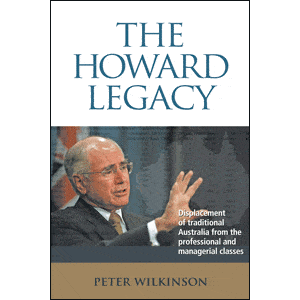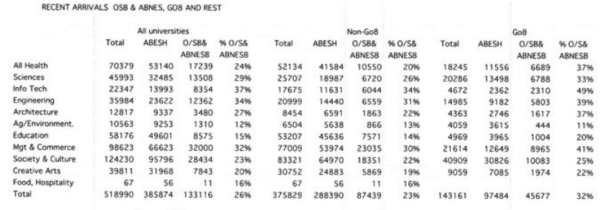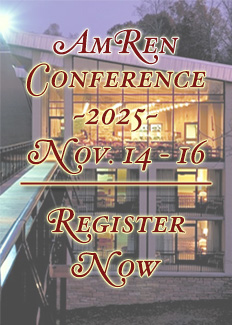The Australian Immigration Crisis
Thomas Jackson, American Renaissance, January 2008
Peter Wilkinson, The Howard Legacy: Displacement of Traditional Australia from the Professional and Managerial Classes, Independent Australian Publications, 2007, soft cover, 170 pp.
Australia has an immigration policy that is like ours stood on its head. The United States is filling up with unlettered Hispanics, who make every social problem worse, whether it is crime, school failure, illegitimacy, youth gangs, obesity, or drug-taking.
Australia is importing hundreds of thousands of smart, hard-working people who are streaming into the nation’s best universities and working their way to the top. Mass immigration at its best? No. “In 1994 the acerbic Le Kuan Yew, then Prime Minister of Singapore, forecast that Australians were destined to be the poor white trash of Asia,” writes Peter Wilkinson in The Howard Legacy. “Today one can say that white Australians are destined to be the poor trash of Australia.”

These successful immigrants are almost all Asians — mainly Chinese — and white Australians have begun to resent their increasing dominance. As columnist Michael Duffy asked in the Sydney Morning Herald, “Is it perhaps the first time in history that a nation’s elite have invited another group to come in and replace it?”
Peter Wilkinson, a former president of the Royal Australian Chemical Institute and now editor of The Independent Australian, has written what is probably the first book-length treatment of this replacement. He has no resentment against Asians, pointing out that they are only exploiting an opportunity, just as the Chinese have done everywhere in Southeast Asia. It is white politicians who have sold out their children’s birthright who are the targets of Dr. Wilkinson’s anger.
The Nature of Immigration
John Howard was prime minister from 1996 until he left office after a Labor victory on November 24, 2007. During that time, explains Dr. Wilkinson, Asians have accounted for a steady 40 percent of all immigrants. The Chinese percentage has drifted down slightly, from about 20 percent to 15 percent of the total, with Indians taking their places. Whites continue to be a minority of all immigrants, at 20 to 25 percent. Asians are now about 7 percent of the population and the Chinese, who account for half them, have an impact far beyond their numbers.
The Australian immigration system used to be weighted towards family reunification, but during the Howard years, the number of immigrants admitted because of skills rose from 28 to 45 percent. In some cases immigration quotas were even allocated to tradesmen, such as carpenters and electricians. This, says Dr. Wilkinson, is because of the foolish idea that everyone should have an “academic” education, which leaves many men with useless degrees in psychology or sociology and no trade. Whites from Europe and South Africa are the immigrant tradesmen; the engineers, accountants, and currency traders are Asian. Asians tend to be concentrated in the power centers of Sydney and Melbourne, where most of the Chinese movie houses and the 14 Chinese newspapers and magazines are found.
The Australian university system helps explain the Asian influx. Higher education is almost entirely free for Australians — only three percent of citizens pay fees — but the government has reduced the education budget over the years. This means universities have come to depend on foreign students, who pay full tariff. Almost one quarter of students are now fee-paying foreigners, and they supply 15 percent of national universities budget.
Graduation with an Australian degree almost guarantees the right to live in Australia. As Dr. Wilkinson explains, “the universities market themselves as providing education but they know, and certainly their prospective applicants know, that they are marketing permanent residency visas.” “Migration agents” do a brisk business recruiting foreign fee-payers. Some low-level cram schools have become almost entirely dependent on Asians, and they lower admissions and credentialing standards to keep the tuition money rolling in. Dr. Wilkinson notes:
At one time in many cases the staff would have probably conceded passes in the knowledge that the students would be out of Australia soon and out of sight and out of mind. Not these days; most likely they will be applying for residency, then appointments to professional positions denied to Australian residents who have to met rigorous standards.
Many classes are filled with people who hardly speak English, and are not much use to Australians, but anyone who complains is, of course, a “racist.”
Dr. Wilkinson points out that Asians who can afford to move to Australia or send their children to school there are middle class at least, and often wealthy. He says that if the first generation is held back by poor English, the second generation will not be. Their children will be just as diligent as they are, and will keep moving up.
Dr. Wilkinson admires the “firm family discipline” of Asians, and contrasts it to the lax, party atmosphere common among white students. Dr Wilkinson notes with disgust that whites are often so badly educated that “many born and bred locals have such poor English grammar and expression skills that recently arrived NESB [non-English-speaking background] immigrants are not particularly disadvantaged.”
Wealthy, motivated Asians take places in the top private schools, and buy houses in the best public school districts, often pricing out whites. The state of New South Wales, which is Australia’s most populous and has Sydney as its capital, has 19 selective high schools. No fewer than 12 have a majority of students who come from homes where English is not spoken. The three most heavily non-white are an astonishing 92 percent, 83 percent, and 78 percent NESB.
Hard work pays off. In 2005, the 3.4 percent of the population that was Chinese won 24 percent of the Australian Student Prizes given for high school work. The state of Victoria is 4 percent Chinese, but Chinese carried off 32 percent of the scholarships at the state’s prestige universities, Melbourne and Monash.

Source: DEST Aggregated Data Set, customised, unpublished statistics. Abbreviations: ABESH – Australian-born, English spoken in the home. O/S – Overseas O/SB – Overseas-born Go8 – Group of Eight ABNESB – Australian-born, non-English-speaking background
The table above shows just how overrepresented non-whites are in Australian universities, especially in the eight top-ranked schools, known collectively as the “Group of Eight.” The abbreviations are confusing, but the table shows what type of student is studying which subjects. In the fourth column, for example, we find that 37 percent of all students studying information technology were either born outside of Australia or were born in Australia of non-English-speaking parents. It is safe to assume that a large majority are non-white, with a heavy representation of Chinese. The last column on the table shows figures for the Group of Eight. No fewer than 49 percent of students in information technology are O/SB or ABNESB.
Dr. Wilkinson writes that most Australians have no idea how non-white Australia’s best universities have become. “Go to any Group of 8 university,” he writes. “Walk around, believe your own eyes.” At the University of New South Wales — in the Group of Eight, of course — 44 percent of the students are Asian. Dr. Wilkinson points out that Asians are heavily concentrated in dentistry and optometry, but do not yet dominate medicine because the English-ability requirement for doctors is high; patients and doctors must understand each other. This language requirement is routinely attacked as “racist,” and, in any case, Australian-born Asians, fluent in English, will soon be gliding into medical schools.
Dr. Wilkinson writes that if current immigration continues, Chinese will be 6 to 10 percent of the population by 2030, and will be concentrated in the best-paid management positions. “The Chinese have become an economy-dominant minority everywhere that they have a significant presence,” he writes. “Why would the situation be any different in Australia?”
There will be more than economic consequences: “Australia will gravitate over time into the Chinese sphere of influence . . . Traditional links with the UK, Europe and USA will fade . . . The leading politicians will be traditional Australians, in the pockets of the Chinese, as is the case in SE Asia.”
Dr. Wilkinson says whites will become rare in selective schools and in the corridors of power: “The cognitively gifted traditional Australian will be a minority. Traditional Australian culture is unlikely to survive in such an environment. Links to Anglo-European culture will evaporate.”
Chinese have generally refrained from boasting about their success, but there have been exceptions. Michael Choi, a member of parliament from Queensland said, “I want the world to know that we [Australians] are hard workers and entrepreneurs and able to sell ice to Eskimos because we have learned that from the Chinese community.” Peter Wong of the New South Wales legislative council says high immigration is a great benefit for Australia because the nation state is obsolete anyway. Whenever a Chinese — or anyone else — points out that whites resent the Asian influx he is hooted down.
Dr. Wilkinson makes the obvious recommendations: immigration should be cut, colleges should not have to depend on foreigners, and an Australian degree should not be a ticket to citizenship. He even suggests preferences for whites.
None of this seems likely. The new prime minister Kevin Rudd majored in Chinese as an undergraduate and held a diplomatic post at the Peking embassy. He is widely known as a Sinophile and even has a Chinese son-in-law. Mr. Rudd will not make it harder for Asians to tighten their grip.
What is happening in Australia is yet another example of why racial diversity does not work. The Chinese who can afford to immigrate are well above average in ability and even further above the Australian average. There is nothing to stop them from displacing the WASP ruling class, and changing the country in ways whites will not like.
Had these talented immigrants been Britons, Canadians, or white South Africans, there would be nothing like the friction that is sure to come. There might be a few murmurs of discontent if Boers, for example, took over a few major banks, but in a generation Boers would be indistinguishable from old Australian stock. The Chinese will remain Chinese, whether they are running a corner laundry or the foreign ministry. And, as Dr. Wilkinson points out, when the old WASP elite discovers that its children and grandchildren are sweeping floors in Chinese-owned factories, they will have only themselves to blame.
















